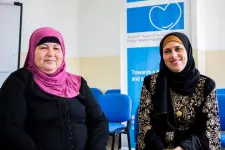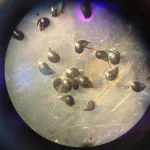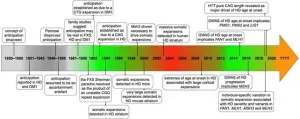(Press-News.org) Low-income middle-aged African-American women with high blood pressure very commonly suffer from depression and should be better screened for this serious mental health condition, according to a study led by researchers at the Johns Hopkins Bloomberg School of Public Health.
The researchers found that in a sample of over 300 low-income, African-American women, aged 40-75, with uncontrolled hypertension, nearly 60 percent screened positively for a diagnosis of depression based on a standard clinical questionnaire about depressive symptoms.
The results appeared February 10 in JAMA Psychiatry.
"Our findings suggest that low-income, middle-aged African-American women with hypertension really should be screened for depression symptoms," says study senior author Darrell Gaskin, PhD, William C. and Nancy F. Richardson Professor in Health Policy and director of the Johns Hopkins Center for Health Disparities Solutions in the Bloomberg School's Department of Health Policy and Management.
Recent research suggests that hypertension and depression often occur concurrently. Gaskin and colleagues note that the connection has not been well studied in African Americans, but should be, given they have relatively high rates of hypertension. Moreover, women in general have much higher rates of depression compared to men and depression is often under diagnosed and untreated.
The sample of women in the study were participants in an ongoing clinical trial of the Prime Time Sister Circles intervention--a health education-, lifestyle-change- and support-group-based intervention in Washington, DC, aimed at helping African American women better managed their blood pressure, weight, other chronic conditions and stress levels. The women were in the 40- to 75-age range, and had hypertension (?140 mmHg systolic or ?90 mmHg diastolic) that had been diagnosed at a federally qualified health center. At the outset of the study, the women filled out a standard questionnaire called the CES-D-10 which asks about depression symptoms in the past week. The analysis from the Bloomberg School team covered the 316 women age 40 to 75 who completed the questionnaires.
The researchers found that 180 of the 316, or about 57 percent, scored 10 or greater on the CES-10-D questionnaire--generally considered evidence of significant depressive symptoms. The women in this group were significantly more likely to have a high school education or less, and to be smokers. More than 34 percent of these women reported that at least once in the previous six months they had stayed in bed for more than half the day owing to depression, compared to only 9 percent of the women with CES-D-10 scores below 10.
The nearly 60 percent prevalence of apparent depression among these hypertensive, low-income middle-aged African American women suggests that these women should be routinely screened for, and, if need be, treated for depression, Gaskin and colleagues emphasize.
They note, however, that 85 percent of the women with depression-level CES-D-10 scores reported receiving some treatment for depression within the prior six months--implying that much of the depression among these low-income middle-aged, hypertensive African-American women is already treated, albeit inadequately.
The Prime Time Sister Circles intervention encourages African American women to prioritize and better manage their health. The clinical trial of that intervention, which is focused mainly on its ability to reduce hypertension but secondarily on its impact on depression, is still ongoing.
"We are hopeful that those women who are in that trial will do better not just in regard to depression but also with regard to other underlying factors that may contribute to high blood pressure," Gaskin says.
INFORMATION:
"Evaluating Depressive Symptoms Among Low Socioeconomic-Status African American Women Aged 40 to 75 Years With Uncontrolled Hypertension" was authored by Angel Gabriel, Hossein Zare, Wehmah Jones, Manshu Yang, Chidinma Ibe, Yidan Cao, Michele Balamani, Marilyn Gaston, Gayle Porter, Denise Woods, and Darrell Gaskin.
Funding was provided by the National Institute on Minority Health and Health Disparities (R01MD010462).
CHAMPAIGN, Ill. -- People who participated in a health education program that included both mental health and physical health information significantly reduced their risks of cardiovascular disease and other chronic diseases by the end of the 12-month intervention - and sustained most of those improvements six months later, researchers found.
People who participated in the integrated mental and physical health program maintained significant improvements on seven of nine health measures six months after the program's conclusion. These included, on average, a 21% ...
New research shows that biodiversity is important not just at the traditional scale of short-term plot experiments--in which ecologists monitor the health of a single meadow, forest grove, or pond after manipulating its species counts--but when measured over decades and across regional landscapes as well. The findings can help guide conservation planning and enhance efforts to make human communities more sustainable.
Published in a recent issue of Frontiers in Ecology and the Environment, the multi-institutional study was led by Dr. Christopher Patrick ...
STEMOs (Stroke-Einsatz-Mobile) have been serving Berlin for ten years. The specialized stroke emergency response vehicles allow physicians to start treating stroke patients before they reach hospital. For the first time, a team of researchers from Charité - Universitätsmedizin Berlin has been able to show that the dispatch of mobile stroke units is linked to improved clinical outcomes. The researchers' findings, which show that patients for whom STEMOs were dispatched were more likely to survive without long-term disability, have been published in JAMA*.
The phrase 'time is brain' emphasizes a fundamental principle from emergency medicine, namely that after stroke, every minute counts. Without ...
With the help of the international Gemini Observatory, a Program of NSF's NOIRLab, and other ground-based telescopes, astronomers have confirmed that a faint object discovered in 2018 and nicknamed "Farfarout" is indeed the most distant object yet found in our Solar System. The object has just received its designation from the International Astronomical Union.
Farfarout was first spotted in January 2018 by the Subaru Telescope, located on Maunakea in Hawai'i. Its discoverers could tell it was very far away, but they weren't sure exactly how far. They needed more observations.
"At that time we did not know the object's orbit as we only had the Subaru discovery observations over 24 hours, but it takes years of ...
A report summary released today by a team at Lehigh University led by Thomas McAndrew , a computational scientist and assistant professor in Lehigh's College of Health, shares the consensus results of experts in the modeling of infectious disease when asked to rank the top 5 most effective interventions to mitigate the spread and impact of COVID-19 in the U.S.
The report is part of an ongoing meta forecasting project aimed at translating forecasting and real world experience into actions.
McAndrew and his colleagues wanted to answer "Here is where ...
Wilmington, DE, Feb. 11, 2020 -Scientists have developed an affordable, downloadable app that scans for potential unintended mistakes when CRISPR is used to repair mutations that cause disease. The app reveals potentially risky DNA alterations that could impede efforts to safely use CRISPR to correct mutations in conditions like sickle cell disease and cystic fibrosis. The development of the new tool, called DECODR (which stands for Deconvolution of Complex DNA Repair), was reported today in The CRISPR Journal by researchers from ChristianaCare's Gene Editing Institute.
"Our research has shown that when CRISPR is used to repair a gene, it also can introduce a variety of subtle changes to DNA near the site of the repair," said Eric ...
Amsterdam, February 11, 2021 - Recent genetic data from patients with Huntington's disease (HD) show that DNA repair is an important factor that determines how early or late the disease occurs in individuals who carry the expanded CAG repeat in the HTT gene that causes HD. The processes of DNA repair further expand the CAG repeats in HTT in the brain implicated in pathogenesis and disease progression. This special issue of the Journal of Huntington's Disease (JHD) is a compendium of new reviews on topics ranging from the discovery of somatic CAG repeat expansion in HD, to our current understanding of the molecular mechanisms involved ...
In the last 25 years, scientists have discovered over 4000 planets beyond the borders of our solar system. From relatively small rock and water worlds to blisteringly hot gas giants, the planets display a remarkable variety. This variety is not unexpected. The sophisticated computer models, with which scientists study the formation of planets, also spawn very different planets. What the models have more difficulty to explain is the observed mass distribution of the planets discovered around other stars. The majority have fallen into the intermediate mass category - planets with masses of several Earth masses to around that of Neptune. Even in ...
LAWRENCE -- Nearly every fall, as football teams return to the field, tragic stories of players falling ill and even dying of heat trauma make the headlines. What many don't consider is that marching band members -- who don heavy uniforms and perform in the same sweltering temperatures -- may also be at risk.
A study led by the University of Kansas has measured core temperatures, hydration and sweat levels of marching band members and found that they are very much at risk and deserve access to athletic trainers for their safety -- just as players do.
The study used high tech methods to gauge band members' body core ...
A study led by researchers at Baylor College of Medicine reveals a novel role of the steroid receptor coactivator 3 (SRC-3/NCOA3), a protein crucial for steroid hormone function and a prognostic marker for aggressive human breast and other cancers.
The team discovered that SRC-3 also regulates human immune T regulatory cells (Tregs), which contribute to the regulation of the body's immunological activity by suppressing the function of other immune cells, including those involved in fighting cancer. The study, which appears in the journal Scientific Reports, shows that Tregs whose SRC-3 function was eliminated failed to suppress the activity of other immune cells in the lab. The authors anticipate that their findings ...





